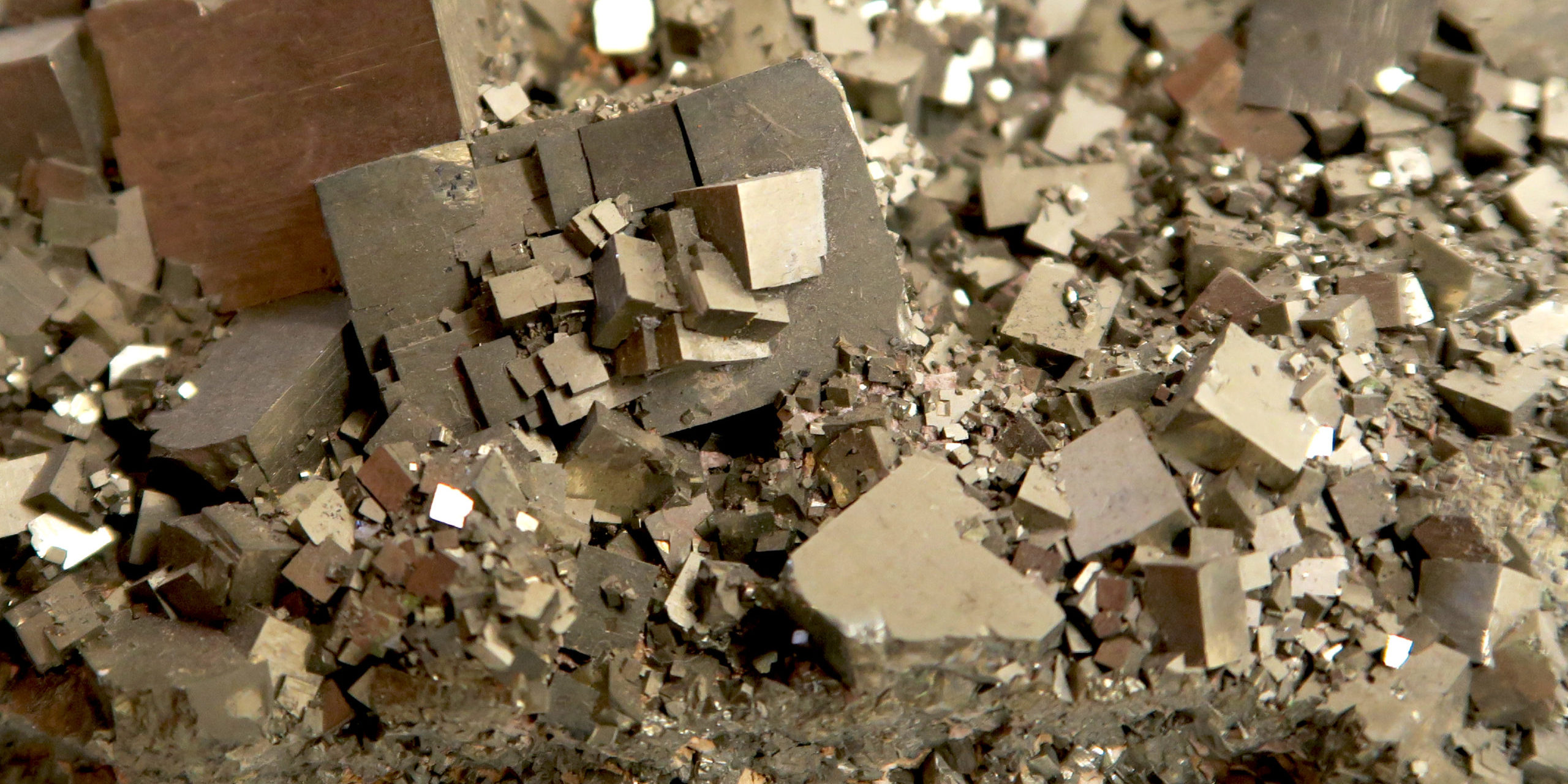On 22/08/17 we published an article about boxworks, which are the result of the corrosive action that the carbonic acid exerts on the dolomitic limestone of the first itinerary, isolating a network of fine layers of calcite.
This time let’s talk about other phenomena of corrosion, made on the same type of rock a few metres from the boxworks, by another much more powerful aggressive factor: sulfuric acid. But where does this acid come from?
In the limestone rocks of the Massif of the Panie it is quite common to find inclusions of pyrite crystals (iron sulfate), one of the most well-known minerals, both for the perfection of its crystals and for its characteristic metallic shininess. This erosion exposes the pyrite to air and water, slowly this mineral transforms into limonite, which is an iron hydrate oxide, releasing sulfuric acid. The quantities released are minimal but enough to attack the surrounding rock.

A thin layer of limonized pyrite in the Grotta del Vento
In the photo a small mass of limonized pyrite can be seen which sticks out towards a cavity in the rock caused by the intense erosive action of the sulfuric acid.
The limonite (normally amorphous, therefore without a crystalline structure) which derives from the transformation of pyrite, often keeps the original shape of the crystals, losing though its metallic shininess. This type of phenomena is defined pseudomorphosis. In the Grotta del Vento the limonite, always originating from the transformation of pyrite, can be found in amorphous little masses and in pseudomorphic crystals with a cubic or pentagonal dodecahedron shape.
The presence of limonite is almost always accompanied by phenomena of corrosion.

Crystals of unaltered cubic pyrite (Isola d’Elba – LI)






